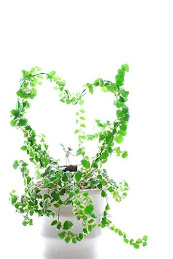 A fence can be used to maintain privacy, corral animals, keep out unwanted wildlife, mark boundary lines, and divide property. Building a fence is a project that requires careful planning and patience. If you would like to build a fence, here is an outline of how it can be done economically and efficiently.
A fence can be used to maintain privacy, corral animals, keep out unwanted wildlife, mark boundary lines, and divide property. Building a fence is a project that requires careful planning and patience. If you would like to build a fence, here is an outline of how it can be done economically and efficiently.1. Lay out exact fence line. You'll need to deal with some preliminary surveillance and paperwork. Know where your property line is. You don't want to take the time and money to build a fence, only to discover your neighbor has the right to tear it down. You might try talking to your neighbor to see if they're interested in having a fence. This will enable you to build the fence directing on the property line, and your neighbor may be willing to chip in some money for the project. You'll also need to check on whether your fencing project requires any building permits before you begin.
2. Treating posts. The most important part of your fence is the part that cannot be seen after construction. This is the part of the post that is below ground. Therefore, pressure treated posts or posts treated with a preservative will assure a lasting firm foundation. It is best to soak untreated posts to a point at least 6" above ground level with a preservative. If you cannot soak the posts in this solution, brushing or spraying two or three liberal coats is next best. Full directions are on each can.
3.The Benefits of Hiring a Professional Fence Builder. You may decide you don't have the proper skills and tools to build and install the fence you want. Even if you can complete the project on your own, there are several reasons you may want to consider hiring a professional fence builder. First, they will bring local knowledge of wind, soil conditions, and how different materials will hold up over time given the climate you live in. It's unlikely you'll be able find this information from general fence building advice. The precision and craftsmanship of a professional fence builder will also ensure a seamless, sharp-looking fence that may last for much longer than the fence you will build. Plus, you save time and the inevitable headaches that come with virtually any DIY project.
Tips for good fence construction:
When nailing rails or boards horizontally, do not have all the joints on one post. Your fence will be stronger if you stagger the joints.
When assembling a large number of boards with equal spacing, ensure that the first board is straight and use a spacer or cleat to ensure equal spacing of the boards.
Cut all boards to length before nailing rails to posts. Often boards must be cut to a nominal length to ensure square corners and smooth ends. If this is the case, rails should be spaced according to board lengths.







